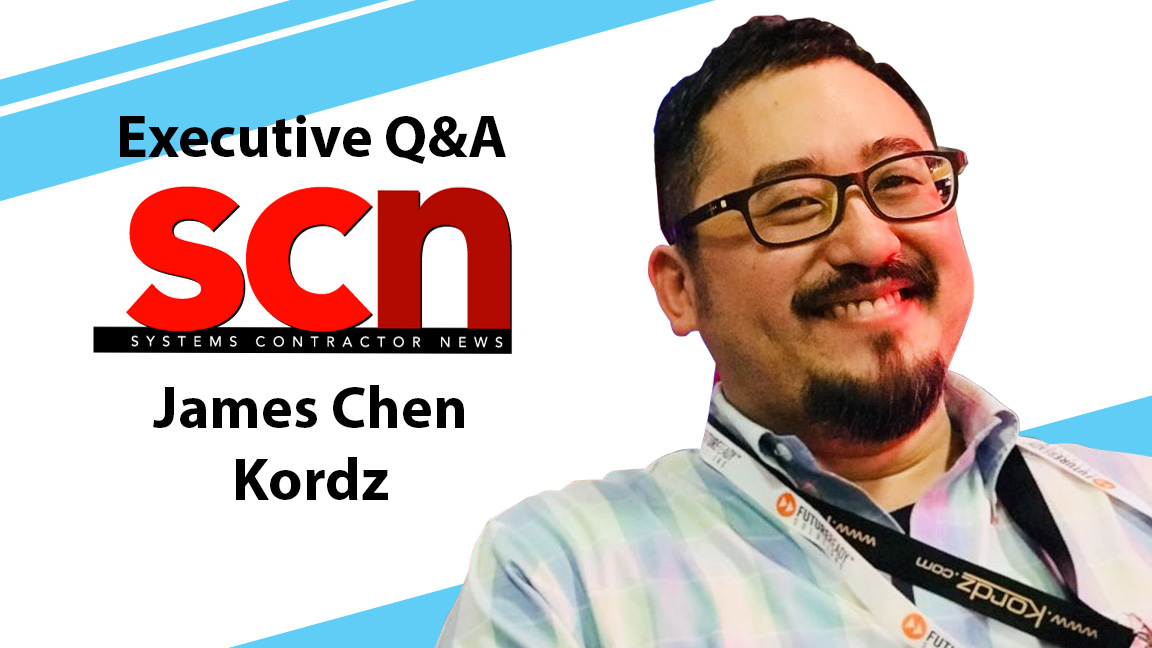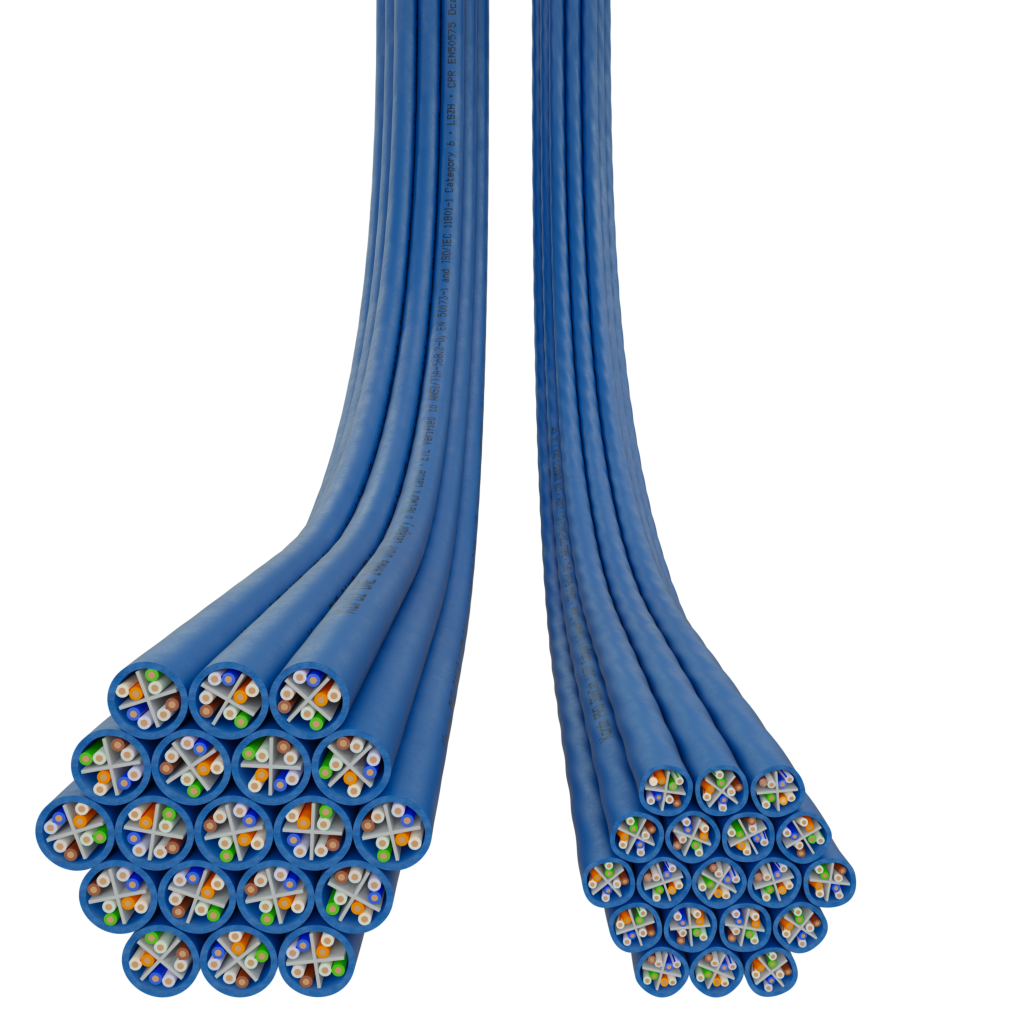Executive Q&A: Serious Cable Management
Kordz managing director James Chen reflects on 20 years of building better connectivity.

SCN: How long have you been with this company, and what are your responsibilities?
James Chen: I began my career as an integrator and moved into sales management, where I helped put BenQ on the map in Australia. I also helped expand the reach of Epson and Samsung products into the professional integration community.
[Executive Q&A: Keep It Clean]
I joined Kordz in 2008 as general manager. Back then, it was a promising startup in Melbourne, Australia, finding a foothold in the professional cabling market. For the last 10 years, as managing director of Kordz International, I’ve focused on serving the connectivity needs of the professional integration community and spearheaded the distribution of our solutions to more than 40 countries. Essentially, I am responsible for the whole business, ensuring that our technology evolves to meet the emerging connectivity needs of our dealers and their customers.
SCN: Your company likes to say, “It takes one to know one.” What do you mean by that?
JC: At Kordz, many people on our team started their careers as integrators. We are all the kind of guys that grew up with parents who were handy with tools, and it fostered a love of tinkering, pulling things apart, and finding ways to make them better and faster.
Even at an early age, we strove to wow people with what we could create. As adults, we channeled this inquisitiveness into our professional lives in AV, where we felt fed up with service calls and stiff, inflexible cables that were so difficult to install. We knew there had to be a better way and hence strove to make better cabling products.
A daily selection of the top stories for AV integrators, resellers and consultants. Sign up below.
Our team shares a desire to do high-quality work that’s right the first time, so we can move on to the next thing. We realize that the kind of integrators that use Kordz products are just like us. A good integrator knows what good quality is when they have it in their hand.
Is the product supple and flexible? Is the jacketing tough and robust? Is the cable easy to work with? Does it have the correct markings for performance, fire, and safety? Does it come with the correct and accurate set of specifications and certifications? Is it well thought out and designed? Does the manufacturer know what they are talking about? Will I get support when I need it?
There are many more questions that any professional with experience will innately have and also know when they see it. We know not everyone is wired this way, and that’s why we say, “It takes one to know one.”
SCN: What makes your new PRO SlimCat product line unique?

JC: Kordz was one of the first brands to develop slim patch leads. It wasn’t long before our customers were asking for a slim Cat6 cable that they could site terminate. Hence, the PRO SlimCat line was born. PRO SlimCat is a new-gen network cabling system that offers all the power of a Cat6 cable in half the size. We are very excited about our suite of PRO SlimCat products, which includes cabling and matching connectors and keystone sockets. Based on the response of attendees at ISE, the global integration community seems excited about it, too.
PRO SlimCat mitigates many of the common pain points experienced by integrators during the deployment of networking cable, especially in retrofit situations where space is tight and in projects with high-density equipment racks. The fact that PRO SlimCat adheres to all current communications standards, including full 100-watt PoE++ compliancy, makes it all the more beneficial to systems integrators and their customers.
SCN: We tend to focus on the cables, but what’s your approach to developing the connectors?
JC: Connectors are just as important as cables. They are the point at which the greatest signal loss can occur. At Kordz, we believe connectors should be tailored specifically for every cable to ensure the entire network performs optimally.
[Executive Q&A: Let's Get Technical]
We believe that a good connector should fit well in the socket, so it’s neither tight nor loose, has the appropriate extraction force for the specific application, and is made of materials to ensure durability and longevity. The internal construction should exceed the specification and meet the promised capacity. It can take us up to 18 months of careful engineering and testing to get the design and manufacturing of each connector right.
I believe the most critical aspect of a quality connector, however, comes from how it was manufactured. A poor-quality connector is the result of tolerances eroding on the production line due to both human and machine error. At Kordz, we minimize these errors by manufacturing the connectors in-house on high-quality machinery and testing every component on the line at each phase of development. This thorough QA process makes all the difference.
SCN: What have been some of the major changes in the cable manufacturing industry since Kordz was established?
JC: Kordz was born 20 years ago at the infancy of digital connectivity. Since its inception, we’ve seen a huge array of electronic devices enter the market. At the same time, consumers have grown increasingly tech savvy, expecting greater performance and capabilities from their technology. As the market shifts, so must the supporting cabling infrastructure. Today, the cabling foundation of homes and businesses must facilitate stable, reliable connectivity and optimal performance of bandwidth-intensive technologies, platforms, and services.
Our team shares a desire to do high-quality work that’s right the first time, so we can move on to the next thing. We realize that the kind of integrators that use Kordz products are just like us.
In the early stages of networking, the options for cabling were somewhat polarized. There were high-quality, expensive, standards-based, proprietary solutions—and there were open, more cost-effective, less capable protocol-agnostic solutions. There was nothing in between for the professional integrator. Kordz was one of the first brands to cater to this middle ground, offering a range of products, each designed and engineered to adhere to a specific communications protocol, ensure superior connectivity, and enable fast, efficient deployment.
Cabling requirements may likely shift again as we enter a new era of networking that demands something I call predictable reliability. Our world has become increasingly unpredictable, as control and management of smart devices have moved to the cloud, where updates happen transparently, and subscriptions and support often lapse, potentially rendering devices inoperable.
Predictable reliability is the practice of providing a predictable and reliable experience for end users. It takes time, knowledge, practice, and therefore experience to deliver a reliable and predictable outcome for any situation. Kordz has made predictable reliability its ongoing goal to deliver value to its customers.
Last but not least, I notice greater recognition among integrators of the importance of quality, safety, and adherence to fire regulations, better transmission methods and language, and simplification of cabling to single twisted pair cabling.
SCN: How is Kordz celebrating its 20th anniversary?
JC: We launched our 20th anniversary celebrations at ISE earlier this year. It was a wonderful opportunity to connect with many of our dealers and customers from around the world who have been on the journey with Kordz for many years, as well as meet many new people. We hosted several evenings of birthday drinks, presented many giveaways, and moderated a cable termination challenge at our booth, which was the highlight of the show.
[Viewpoint: A Meeting Equity Progress Report]
As the year progresses, we want to celebrate our customers and learn how they are applying technology in meaningful ways. By better understanding the challenges they face, we can continue to refine our solutions to meet their needs. The 20th anniversary party will continue at Smart Home Expo in New Delhi, followed by InfoComm, Integrate in Sydney, and CEDIA Expo. By popular demand, we’ll be running the cable termination challenge at major events and welcome SCN readers to see if they can beat the best time.
Personally, I feel really proud of what the company has achieved and everything it's taken to reach this point. Our lifetime warranty means even more as we continue to be around to stand by it.
SCN: You have one distributor, Future Ready Solutions, in North America. Are you looking to expand your distribution network in the United States?
JC: Our relationship with Future Ready Solutions is very strong. As our U.S. market grows, we hope to continue to refine how we do things and add value to the distribution chain. Kordz focuses on manufacturing and innovation for the professional integrator, so it is critical to our success to constantly look at how we can strengthen our relationships with our distributors.
SCN: As someone who has them attached to every TV in his house, what makes one HDMI cable better than another?
JC: There are two key attributes I recommend professional integrators look for in an HDMI cable. First, is it certified? Look for the HDMI licensing logo or go to hdmi.org to determine if the manufacturer is an official HDMI adopter. This makes them legally responsible for upholding the standards. I recommend downloading the HDMI app and scanning the certification code on the packaging to ensure you're getting the real deal. If you see cables labeled with version numbers like 1.4, 2.0, or 2.1, it's a red flag. The manufacturers of these cables are not real HDMI adopters, since this practice was banned by HDMI in 2017.
[Editorial: Can NDI Become Ubiquitous?]
Second, look closely at specific manufacturing and engineering specs. For example, all Kordz HDMI connectors have extraction ratings (10 newtons for our PRO series, 20 newtons for our PRS and R.3) to ensure the weight of the cable doesn’t pull the connector loose.
SCN: What is the most popular type of cable you sell, and has that changed over the past few years?
JC: Our most popular bulk wire is our speaker wire, as it follows the Kordz cable concepts closely (quality materials, easy to work with, flexible and robust) and we support this with lots of technical specifications that are easy to understand so integrators know what to specify.
Our most popular cable is the R.3 HDMI cable. It is super flexible, given it is one of the most-shielded HDMI cables available, and it has been used for everything from plugging in a TV to mission-critical projects in hospitals, military environments, and even in space. It has been designed specifically to operate within areas of high electromagnetic interference, such as equipment racks.
As previously mentioned, there are a lot of communications platforms; fortunately, they have been built around common network cabling. Therefore, the changes we’ve seen in recent years revolve around improved certification, fire rating, and safety.

Mark J. Pescatore, Ph.D., has been the content director of Systems Contractor News since 2021. During his career, he's hosted and programmed two ongoing regional industry trade shows (including Future B2B's AV/IT Summit), produced and hosted podcasts and webinars focused on the professional video marketplace, taught more than a dozen college communication courses, co-authored the book Working with HDV, and co-edited two editions of The Guide to Digital Television.
